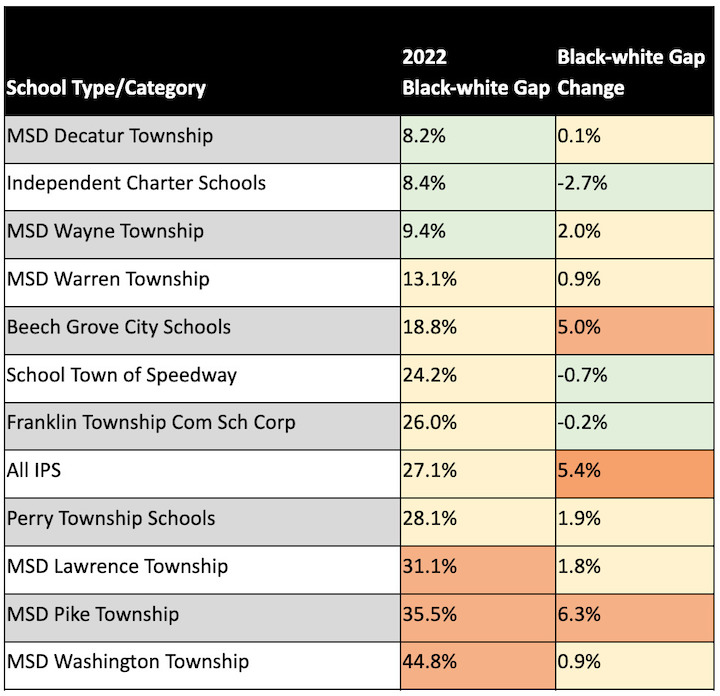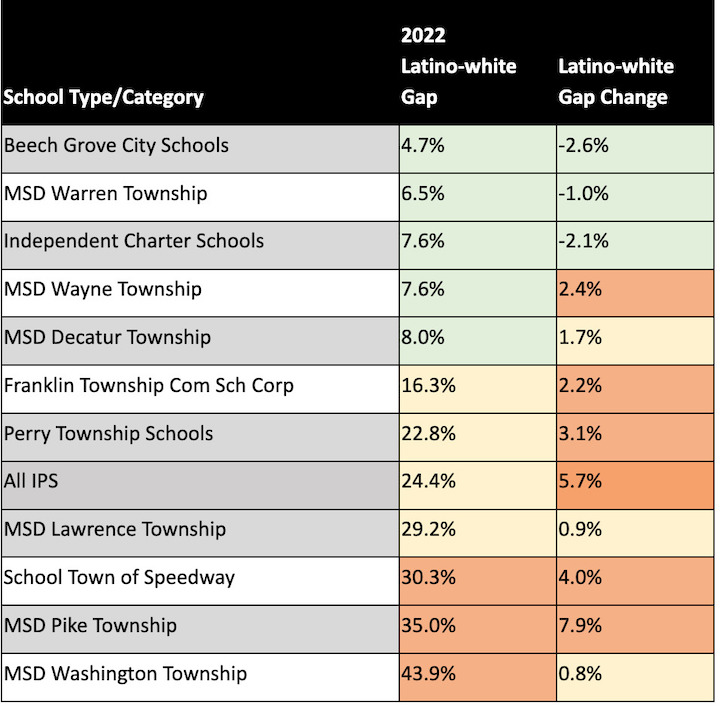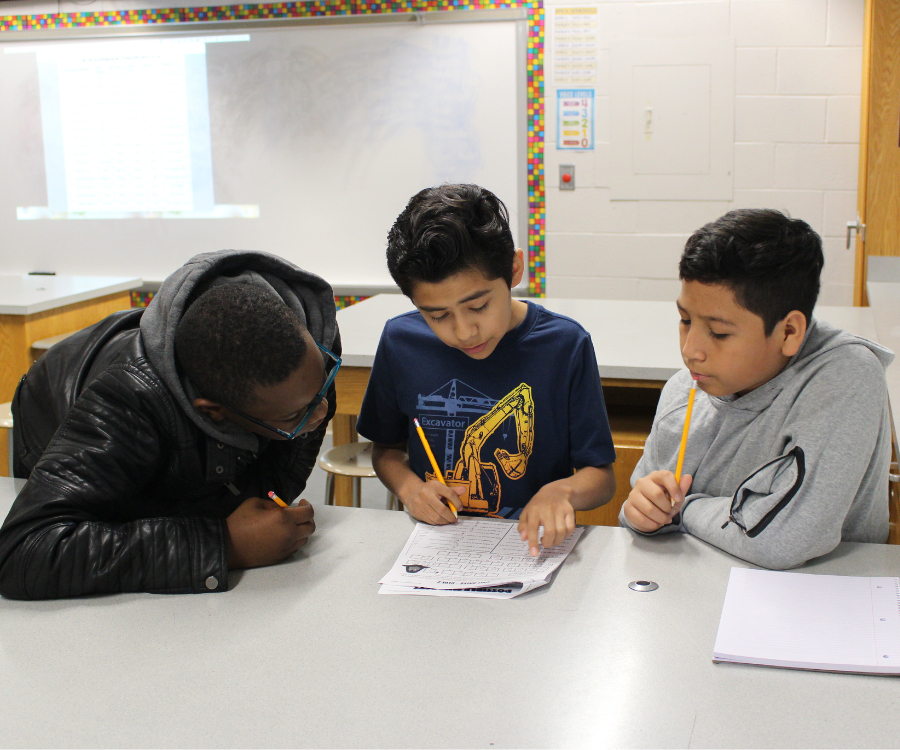ILEARN 2022: Examining Critical Progress
Each year, Indiana students in grades 3-8 take the ILEARN, a state assessment that measures student learning in English and math. The test has two sections, math and English Language Arts (ELA). If a student passes both, they are considered proficient for their grade level, meaning they are demonstrating the knowledge and skills they need to stay on track academically.
While a single test can’t show us everything about an individual student, this data is incredibly important to analyze at the school, district, county, and state level. Additionally, it is critical to dive into data for different student groups to gain a real sense of how all students are being served by schools. Historically marginalized students, like students of color and those from low-income families, were most impacted by the disruptions of the pandemic. Measuring progress for these groups is critical to understanding how to accelerate learning gains for all students.
At The Mind Trust, this yearly data set is extremely valuable to our work. We encourage everyone in our community to take a look at the results each year, but especially after the major disruptions caused by the pandemic.
Future blog posts will explore results for English Language Learners, special education students, and math and ELA sections individually.
Statewide Progress: Modest Increases
In 2021, the first year students took a state assessment after the pandemic began, Hoosier students statewide saw an 8.5 point proficiency decrease from the 2019 ILEARN assessment, going from a 37.1% pass rate to 28.6%.
In 2022, statewide student performance averages saw modest gains in ILEARN proficiency for grades 3-8:
- The statewide average pass rate improved by 1.7 percentage points to 30.2%.
- Statewide proficiency for Black students increased by 1.8 points to 9.9%.
- Statewide proficiency for Latino students improved by 1.7 points to 17.3%.
- Statewide proficiency for low-income students increased by 1.6 points to 16.6%.
These small gains erased about 20% of the proficiency decrease from 2019 to 2021. It is good to see decreases haven’t continued. However, if the state continues to see increases similar to this year, it will take another four years to merely catch up to 2019 proficiency levels, which were already too low to begin with.
Marion County Progress: IPS & Charters Outperform State Average
Indianapolis has 11 public school districts that serve more than 150,000 students. In addition, more than 13,400 students were enrolled in independent public charter schools in Marion County during the 2021-2022 school year, a total enrollment that surpasses 7 of the 11 school districts.
In Indianapolis, public charter schools and innovation network schools achieved proficiency gains meaningfully larger than the state average. Independent charter schools in Indianapolis increased their overall proficiency by 3.8 points, matching or surpassing increases for all of the 11 Marion County school districts. Within the IPS boundaries, ten of the 12 public schools that achieved the largest proficiency increases for Black students were charter and innovation schools.
All but one district, Pike Township, saw some proficiency improvements. Public schools of all types within IPS boundaries achieved significantly larger proficiency increases than most township districts. Township districts together achieved an overall proficiency increase of 1.3 points, a 0.5 point increase for Black students, and a 0.5 point increase for Latino students. These increases were all smaller than the state average increase.
Student Group Data Show the Full Story
Digging into student group data is important to understand how diverse students are being served. In 2022, Indianapolis Black, Latino, and low-income independent charter school students all saw proficiency percentage point gains that surpassed the state average. These increases erased between 40 – 50% of the pandemic proficiency decreases for various student groups.
These learning gains mean that Black public charter school students in Indianapolis improved their proficiency by twice the state average, three times the Marion County average, and seven times the township district average. Latino public charter school students in Indianapolis improved by twice the state average, three times the Marion County average, and six times the township district average.
Five township districts saw decreases for Black, Latino, or low-income student pass rates. This should be cause for concern, and district leadership and families should pay close attention to trends that place students in an even worse place academically than during the height of the pandemic.
Black and Latino Achievement Gaps
Another measure of student learning is the rate at which achievement gaps are narrowed. This is measured by the pass rate for white students in a district or group of schools versus the pass rate for Black or Latino students in the same district or group of schools. In Indianapolis, these gaps are anywhere from 8.2% to 44.8%.
Public charter schools in Indianapolis cut their Black-white achievement gap by 2.7 points, which was the largest drop in Marion County. These schools now have the second smallest gap compared to the 11 Marion County districts. Nine of the 11 Indianapolis school districts saw their Black-white achievement gap grow in 2022.

Public charter schools in Indianapolis cut their Latino-white achievement gap by 2.1 points, representing the second largest drop in Marion County. Nine of the 11 Indianapolis school districts saw their Latino-white achievement gap grow in 2022.

Community Conversation with EmpowerED Families & The Mind Trust
EmpowerED Families and The Mind Trust hosted a virtual community conversation on this year’s ILEARN results on July 26, 20022. Watch a recording of this lively conversation.

